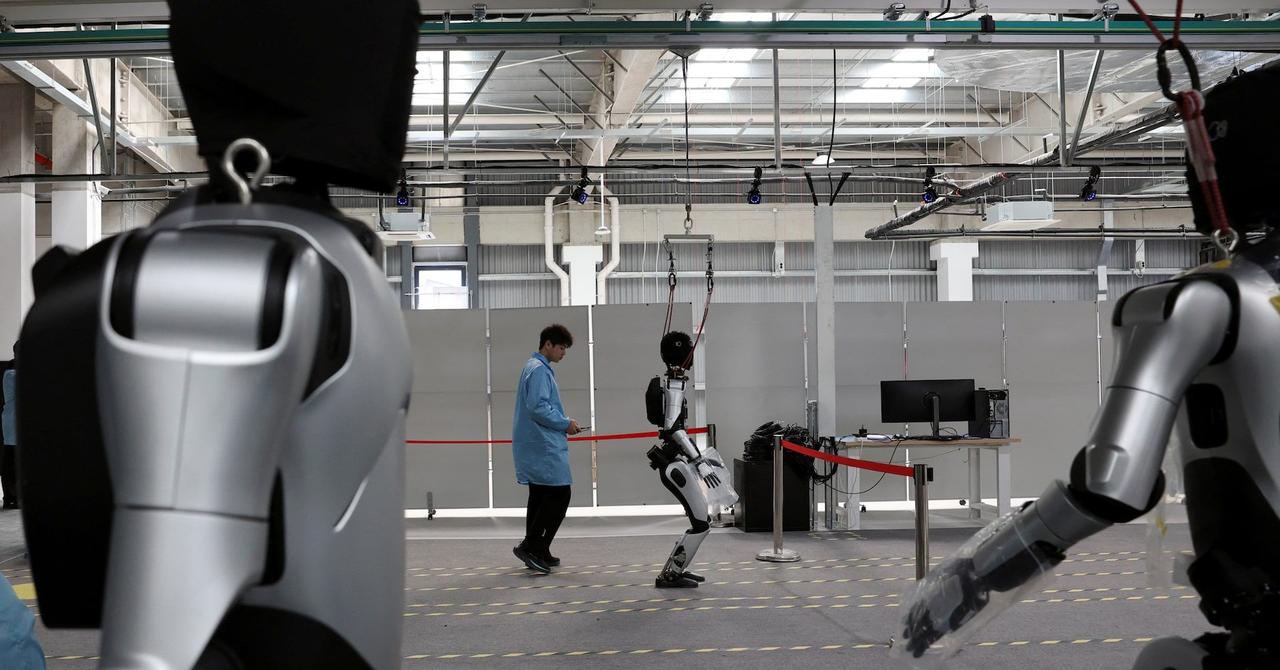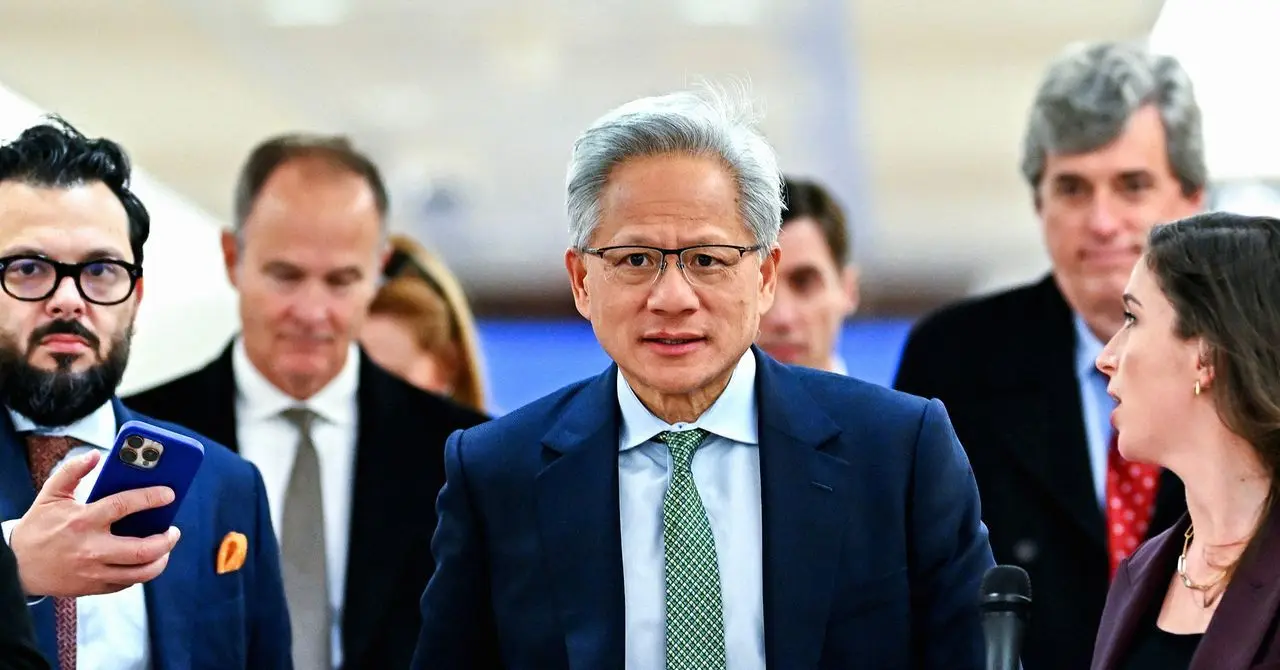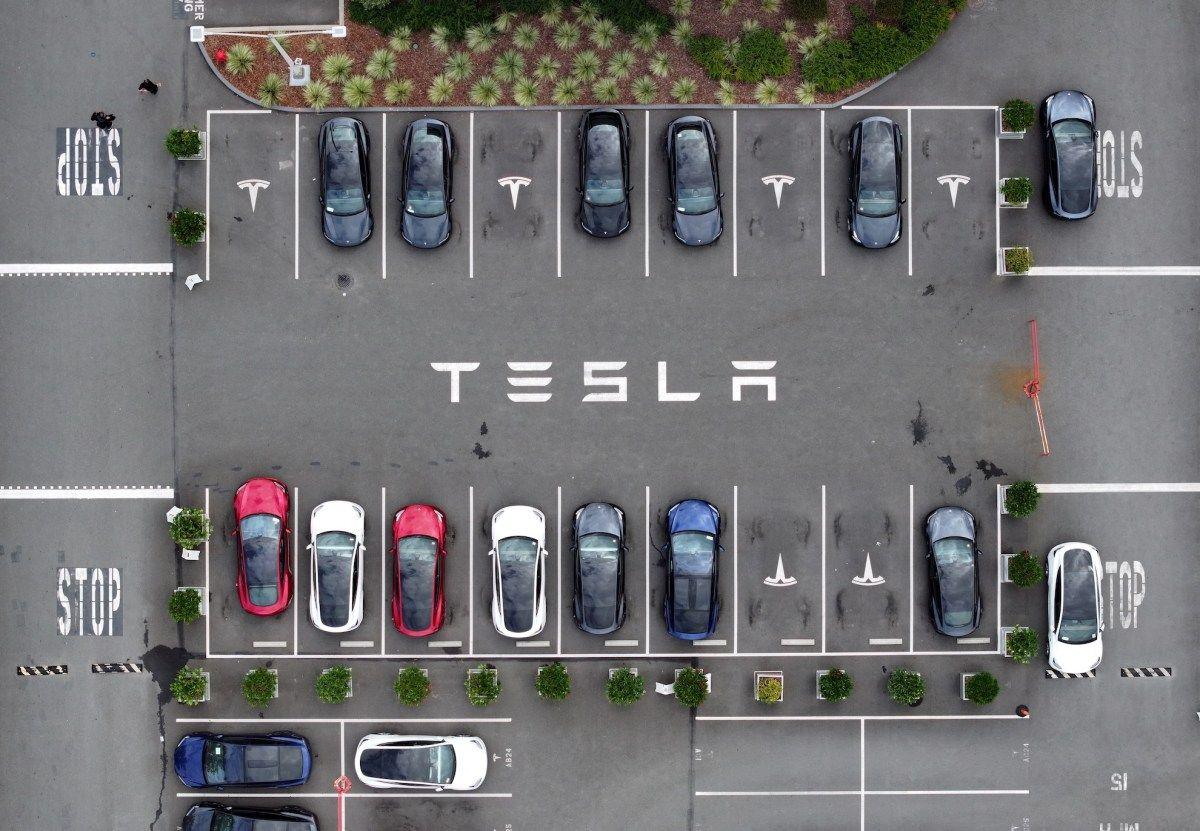China's AI-Powered Robot Army: A Game-Changer in Global Trade and Manufacturing
2 Sources
2 Sources
[1]
China has an army of robots on its side in the tariff war
NINGBO, China -- China's secret weapon in the trade war is an army of factory robots, powered by artificial intelligence, that have revolutionized manufacturing. Factories are being automated across China at a breakneck pace. With engineers and electricians tending to fleets of robots, these operations are bringing down the cost of manufacturing while improving quality. As a result, China's factories will be able to keep the price of many of its exports lower, giving it an advantage in fighting the trade war and President Donald Trump's high tariffs. China is also facing new trade barriers by the European Union and developing countries ranging from Brazil and India to Turkey and Thailand. Factories are now more automated in China than in the United States, Germany or Japan. China has more factory robots for every 10,000 manufacturing workers than any other country except South Korea or Singapore, according to the International Federation of Robotics. China's automation drive has been guided by government directives and backed with huge investment. And as robots replace workers, automation positions China to continue to dominate mass production even as its labor force ages and becomes less willing to take industrial jobs. He Liang, founder and CEO of Yunmu Intelligent Manufacturing, one of China's top producers of humanoid robots, said China was striving next to turn robotics into an entire new sector of business. "The expectation for humanoid robots is to create another electric car industry," he said. "So from this perspective, it is a national strategy." Robots are replacing workers not just in car factories but even in China's many thousands of back-alley workshops. Elon Li's curbside workshop in Guangzhou, the commercial hub of southeastern China, has 11 workers who cut and weld metal to make inexpensive ovens and barbecue equipment. He is now preparing to pay $40,000 to a Chinese company for a robotic arm with a camera. The device uses artificial intelligence to observe how a worker welds the sides of an oven, and then duplicates the action with minimal human intervention. Only four years ago, the same system was available only from foreign robot companies and cost nearly $140,000. "Before, I never would have imagined investing in automation," Li said, adding that a human employee "can only work for eight hours a day, but a machine can work 24 hours." Bigger companies bet far more on automation. In Ningbo, a huge factory for Zeekr, a Chinese electric carmaker, had 500 robots when it opened four years ago. Now there are 820, and many more are planned. Cheerfully trilling Kenny G tunes to warn any people of their approach, robot carts haul aluminum ingots to an automated elevator, which lifts the blocks of metal to a furnace at the top of a 40-foot-tall Chinese-made machine. Once molten, the aluminum is cast into the shapes of various car body panels and other components. More robot carts, and the occasional human driving a forklift, take the components to a warehouse. Yet more robots take the panels to the assembly line, where hundreds of robotic arms, working in teams of up to 16, do a complex dance to weld them together into car bodies. The welding area is a so-called dark factory, meaning that the robots can operate without workers and with the lights off. China's factories still employ legions of workers. Even with the automation, they are needed to check quality and install some parts that require manual dexterity, like wiring harnesses. There are things cameras and computers cannot do on their own. Before cars are painted, workers still run gloved hands over them and sand smooth any tiny imperfections. Yet some of the later steps of quality control are also being automated with the help of artificial intelligence. Near the end of Zeekr's assembly line, a dozen high-resolution cameras take photos of each car. Computers compare the images to an extensive database of correctly assembled cars and alert factory staff if a discrepancy is found. The task takes seconds to complete. "Most of our colleagues' jobs involve sitting in front of a computer monitor," said Pinky Wu, a Zeekr worker. Zeekr and other Chinese automakers are also using artificial intelligence to design cars and their features more efficiently. Carrie Li, a designer who works at Zeekr's new office building in Shanghai, uses AI to analyze how different interior surfaces will intersect in a car. "I have more spare time to open my mind and explore for myself which kinds of fashion trends to include in the cars' interior," Li said. Car factories in the United States also use automation, but much of the equipment comes from China. Most of the world's car assembly plants built in the past 20 years were in China, and an automation industry grew up around them. Chinese companies also bought overseas suppliers of advanced robotics, like Kuka of Germany, and moved much of their operations to China. When Volkswagen opened an electric car factory a year ago in Hefei, it had only one robot from Germany and 1,074 robots made in Shanghai. China's rapid advance in factory robotics has been propelled from the top down. Beijing's "Made in China 2025" initiative, which began a decade ago, set out 10 industries in which China sought to be globally competitive. Robotics was one of them. To force the car industry to think about how to use humanoid robots with two arms and two legs, for example, government officials in Beijing told major automakers last year to rent robots and submit videos of them performing tasks in their assembly plants. The videos required many takes to get them right. The robots did only basic tasks, like sorting auto parts in a warehouse. But the initiative has helped push the carmakers along. In a show of the automation push, the Beijing municipal government held a half-marathon on Saturday for 12,000 runners and 20 humanoid robots. Only six robots finished the race, and the fastest of them took nearly three times as long as the fastest runners. But the event helped draw attention to robots. Last month, Premier Li Qiang, China's second-highest official, said in his annual report to the legislature that the country's plans this year would include an effort to "vigorously develop" intelligent robots. The country's top economic planning agency announced a $137 billion national venture capital fund for robotics, artificial intelligence and other advanced technologies. China's government-controlled banks have increased lending to industrial borrowers over the past four years by a staggering $1.9 trillion. That has paid for the construction of factories as well as the replacement of equipment at existing ones. China's universities produce about 350,000 mechanical engineering graduates per year, as well as electricians, welders and other trained technicians. By comparison, American universities graduate about 45,000 mechanical engineers each year. Jonathan Hurst, the chief robot officer and a co-founder of Agility Robotics, a leading American robot manufacturer, said finding skilled employees had been one of his biggest challenges. As a graduate student in the Robotics Institute at Carnegie Mellon University in Pittsburgh, Hurst said, he was one of two mechanical engineers. China's rapid embrace of automation worries some Chinese workers. Geng Yuanjie, 27, drives a forklift at the Zeekr factory, where he has worked for the past two years. He said there were considerably fewer robots at the Volkswagen factory where he previously worked. Surrounded now by robots, he has few co-workers to talk to during his 12-hour shifts. "I can feel the trend towards automation," Geng said as he watched a robot cart pull a rack of car parts past his forklift. He said that his high school education might not be enough for him to qualify for classes in programming robots, and that he worried he might lose his job someday to a robot. "It is not just my concern -- everyone worries about it," Geng said. Automation has threatened and even eliminated jobs around the world for more than a century, often slowing automation's growth. In China, there are fewer obstacles than practically anywhere else. China has no independent labor unions, and Communist Party control leaves almost no room for dissent. Another factor behind China's automation drive is the country's demographic crisis. The number of babies born each year has dropped by almost two-thirds since 1987. At the same time, two-thirds of people turning 18 now enroll at a university or college, an educational trajectory that has allowed a new generation to aspire to careers outside factory labor. "China's demographic dividend is over," said Stephen Dyer, head of the Asia industrial practice at AlixPartners, a consulting firm. "They're now in a demographic deficit, and the only way out of that is productivity." Keith Bradsher, who has visited hundreds of factories in China since 2002, reported from Ningbo, Shanghai and Guangzhou in China. Li You contributed research.
[2]
China has an army of robots on its side in the tariff war
China is rapidly automating factories with AI-powered robots, cutting costs and boosting export competitiveness amid global trade tensions. Government investment, cheap robotics, and skilled labor fuel the shift. From small workshops to auto giants like Zeekr, robots now dominate production, raising efficiency but also worker fears about job loss. Automation is now a national strategy.China's secret weapon in the trade war is an army of factory robots, powered by artificial intelligence, that have revolutionized manufacturing. Factories are being automated across China at a breakneck pace. With engineers and electricians tending to fleets of robots, these operations are bringing down the cost of manufacturing while improving quality. As a result, China's factories will be able to keep the price of many of its exports lower, giving it an advantage in fighting the trade war and President Donald Trump's high tariffs. China is also facing new trade barriers by the European Union and developing countries ranging from Brazil and India to Turkey and Thailand. Factories are now more automated in China than in the United States, Germany or Japan. China has more factory robots for every 10,000 manufacturing workers than any other country except South Korea or Singapore, according to the International Federation of Robotics. China's automation drive has been guided by government directives and backed with huge investment. And as robots replace workers, automation positions China to continue to dominate mass production even as its labor force ages and becomes less willing to take industrial jobs. He Liang, founder and CEO of Yunmu Intelligent Manufacturing, one of China's top producers of humanoid robots, said China was striving next to turn robotics into an entire new sector of business. "The expectation for humanoid robots is to create another electric car industry," he said. "So from this perspective, it is a national strategy." Robots are replacing workers not just in car factories but even in China's many thousands of back-alley workshops. Elon Li's curbside workshop in Guangzhou, the commercial hub of southeastern China, has 11 workers who cut and weld metal to make inexpensive ovens and barbecue equipment. He is now preparing to pay $40,000 to a Chinese company for a robotic arm with a camera. The device uses artificial intelligence to observe how a worker welds the sides of an oven, and then duplicates the action with minimal human intervention. Only four years ago, the same system was available only from foreign robot companies and cost nearly $140,000. "Before, I never would have imagined investing in automation," Li said, adding that a human employee "can only work for eight hours a day, but a machine can work 24 hours." Bigger companies bet far more on automation. In Ningbo, a huge factory for Zeekr, a Chinese electric carmaker, had 500 robots when it opened four years ago. Now there are 820, and many more are planned. Cheerfully trilling Kenny G tunes to warn any people of their approach, robot carts haul aluminum ingots to an automated elevator, which lifts the blocks of metal to a furnace at the top of a 40-foot-tall Chinese-made machine. Once molten, the aluminum is cast into the shapes of various car body panels and other components. More robot carts, and the occasional human driving a forklift, take the components to a warehouse. Yet more robots take the panels to the assembly line, where hundreds of robotic arms, working in teams of up to 16, do a complex dance to weld them together into car bodies. The welding area is a so-called dark factory, meaning that the robots can operate without workers and with the lights off. China's factories still employ legions of workers. Even with the automation, they are needed to check quality and install some parts that require manual dexterity, like wiring harnesses. There are things cameras and computers cannot do on their own. Before cars are painted, workers still run gloved hands over them and sand smooth any tiny imperfections. Yet some of the later steps of quality control are also being automated with the help of artificial intelligence. Near the end of Zeekr's assembly line, a dozen high-resolution cameras take photos of each car. Computers compare the images to an extensive database of correctly assembled cars and alert factory staff if a discrepancy is found. The task takes seconds to complete. "Most of our colleagues' jobs involve sitting in front of a computer monitor," said Pinky Wu, a Zeekr worker. Zeekr and other Chinese automakers are also using artificial intelligence to design cars and their features more efficiently. Carrie Li, a designer who works at Zeekr's new office building in Shanghai, uses AI to analyze how different interior surfaces will intersect in a car. "I have more spare time to open my mind and explore for myself which kinds of fashion trends to include in the cars' interior," Li said. Car factories in the United States also use automation, but much of the equipment comes from China. Most of the world's car assembly plants built in the past 20 years were in China, and an automation industry grew up around them. Chinese companies also bought overseas suppliers of advanced robotics, like Kuka of Germany, and moved much of their operations to China. When Volkswagen opened an electric car factory a year ago in Hefei, it had only one robot from Germany and 1,074 robots made in Shanghai. China's rapid advance in factory robotics has been propelled from the top down. Beijing's "Made in China 2025" initiative, which began a decade ago, set out 10 industries in which China sought to be globally competitive. Robotics was one of them. To force the car industry to think about how to use humanoid robots with two arms and two legs, for example, government officials in Beijing told major automakers last year to rent robots and submit videos of them performing tasks in their assembly plants. The videos required many takes to get them right. The robots did only basic tasks, like sorting auto parts in a warehouse. But the initiative has helped push the carmakers along. In a show of the automation push, the Beijing municipal government held a half-marathon on Saturday for 12,000 runners and 20 humanoid robots. Only six robots finished the race, and the fastest of them took nearly three times as long as the fastest runners. But the event helped draw attention to robots. Last month, Premier Li Qiang, China's second-highest official, said in his annual report to the legislature that the country's plans this year would include an effort to "vigorously develop" intelligent robots. The country's top economic planning agency announced a $137 billion national venture capital fund for robotics, artificial intelligence and other advanced technologies. China's government-controlled banks have increased lending to industrial borrowers over the past four years by a staggering $1.9 trillion. That has paid for the construction of factories as well as the replacement of equipment at existing ones. China's universities produce about 350,000 mechanical engineering graduates per year, as well as electricians, welders and other trained technicians. By comparison, American universities graduate about 45,000 mechanical engineers each year. Jonathan Hurst, the chief robot officer and a co-founder of Agility Robotics, a leading American robot manufacturer, said finding skilled employees had been one of his biggest challenges. As a graduate student in the Robotics Institute at Carnegie Mellon University in Pittsburgh, Hurst said, he was one of two mechanical engineers. China's rapid embrace of automation worries some Chinese workers. Geng Yuanjie, 27, drives a forklift at the Zeekr factory, where he has worked for the past two years. He said there were considerably fewer robots at the Volkswagen factory where he previously worked. Surrounded now by robots, he has few co-workers to talk to during his 12-hour shifts. "I can feel the trend towards automation," Geng said as he watched a robot cart pull a rack of car parts past his forklift. He said that his high school education might not be enough for him to qualify for classes in programming robots, and that he worried he might lose his job someday to a robot. "It is not just my concern -- everyone worries about it," Geng said.
Share
Share
Copy Link
China's rapid adoption of AI-powered robots in manufacturing is revolutionizing its industrial landscape, potentially giving it a significant edge in global trade disputes and reshaping the future of production.

China's Robotic Revolution in Manufacturing
China is spearheading a manufacturing revolution with its rapidly expanding army of AI-powered robots. This technological leap is positioning the country to maintain its dominance in mass production and potentially gain an upper hand in ongoing trade disputes
1
2
.Automation Across Industries
The automation drive is not limited to large-scale operations. Even small workshops are embracing this trend. In Guangzhou, Elon Li's curbside workshop, which produces ovens and barbecue equipment, is investing $40,000 in a robotic arm equipped with AI capabilities. This system, which was previously only available from foreign companies at a much higher cost, can now work around the clock, significantly boosting productivity
1
.Zeekr: A Case Study in Advanced Automation
Zeekr, a Chinese electric carmaker, exemplifies the scale of this automation push. Its factory in Ningbo has increased its robot count from 500 to 820 in just four years. These robots perform a wide range of tasks, from transporting materials to welding car bodies in "dark factories" that can operate without human presence or lighting
1
.AI in Quality Control and Design
Artificial Intelligence is not just powering robots on the factory floor. It's also revolutionizing quality control and design processes:
- At Zeekr's assembly line, AI-powered cameras and computers perform rapid quality checks, comparing each car to a database of correctly assembled vehicles
1
. - In design, AI is being used to analyze interior surfaces, freeing up human designers to focus on creative aspects like incorporating fashion trends
1
.
China's Strategic Push for Robotics Dominance
China's rapid advancement in factory robotics is part of a top-down strategy. The "Made in China 2025" initiative, launched a decade ago, identified robotics as one of ten key industries for global competitiveness
1
. This national focus has led to:- China now having more factory robots per 10,000 manufacturing workers than the US, Germany, or Japan
1
. - The development of a robust domestic robotics industry, with Chinese-made robots now dominating even in foreign car manufacturers' plants in China
1
.
Related Stories
Implications for Global Trade and Labor
This automation drive has significant implications:
- Trade Competitiveness: By reducing costs and improving quality, China aims to keep its exports competitive despite rising tariffs and trade barriers
1
2
. - Labor Market Shifts: While factories still employ many workers, roles are shifting towards monitoring and specialized tasks that robots can't perform
1
. - Global Supply Chains: China's dominance in robotics manufacturing is influencing global supply chains, with even US car factories sourcing much of their automation equipment from China
1
.
Challenges and Future Directions
Despite the rapid progress, challenges remain. Some tasks still require human touch, such as final quality checks and installing complex components like wiring harnesses
1
. However, the push towards even more advanced automation continues, with efforts to develop and integrate humanoid robots into manufacturing processes1
.As China continues to invest heavily in AI and robotics, it's not just transforming its own manufacturing sector but potentially reshaping global industrial dynamics. This technological leap could have far-reaching implications for international trade, labor markets, and economic competitiveness in the years to come.
References
Summarized by
Navi
[1]
Related Stories
China's AI-Powered Humanoid Robots: Transforming Manufacturing and Driving Economic Growth
13 May 2025•Technology

US Robot Makers Face Tariff Challenges in Race Against China for Humanoid Dominance
02 May 2025•Technology

China's Robot Makers Race to Develop Humanoid Workers, Challenging Tesla
23 Aug 2024

Recent Highlights
1
OpenAI releases GPT-5.2 AI model after code red memo targets Google's Gemini 3 threat
Technology

2
Disney invests $1 billion in OpenAI, licenses 200+ characters for Sora video generator
Technology

3
Disney accuses Google of massive copyright infringement through AI-generated character images
Policy and Regulation





